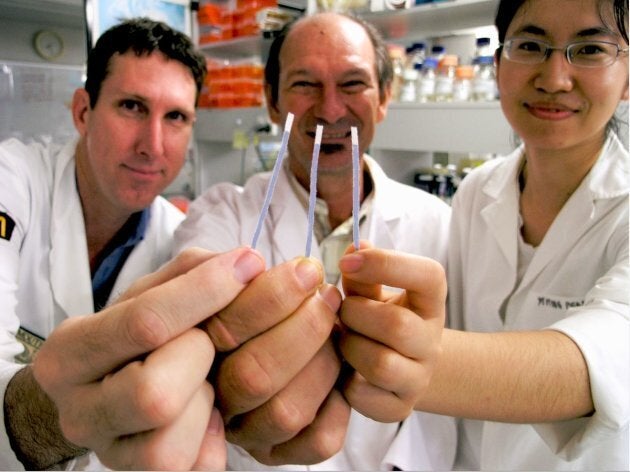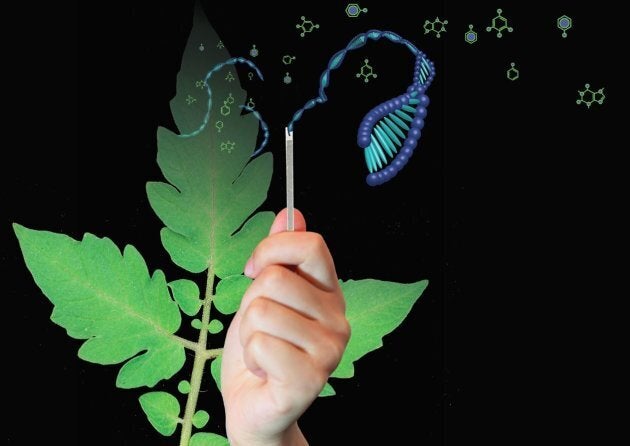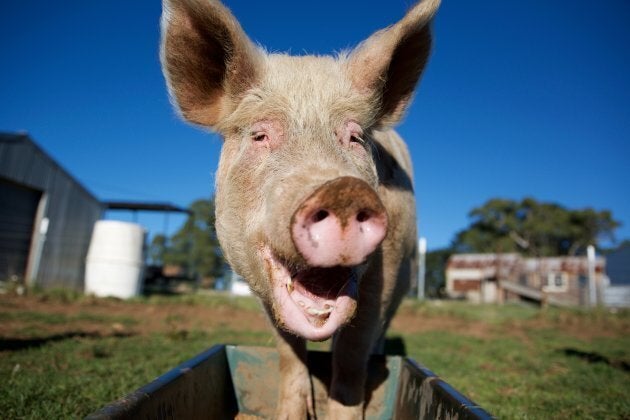Australian scientists have developed a breakthrough technology that could revolutionise the way we diagnose disease -- and it's all thanks to the humble paper towel.
By providing a cheap, fast and easily accessible way of extracting DNA and RNA from everything from saliva and blood through to plant leaves, it has the potential to transform complex laboratory testing into a simple operation that can be done by a novice at home, in a hospital or even a paddock.

"DNA and RNA extraction is well known -- we've been doing it for 20 or 30 years -- but what is novel is the speed of this," one of the University of Queensland researchers, Dr Michael Mason, told HuffPost Australia.
The new technology uses a tiny dipstick made of cellulose-based paper (yep, that's paper towel) to separate the DNA and RNA molecules from almost any living organism in as little as 30 seconds. RNA is a type of molecule similar to DNA but where DNA is the same in every cell in your body, RNA is only found in the type of cells it's used in.
Once separated from the other cells, the DNA or RNA can then be tested for a huge range of common diseases, from HIV and hepatitis through to cancer -- all without ever having to enter a laboratory.
"You could look for the presence of a virus, the presence of a bacteria, the presence of a cancer; anything you want because basically you're looking for DNA and RNA so anything that contains RNA and DNA you can detect," University of Queensland's Dr Michael Mason said.
And it's not just for humans.
The technology also has big implications for agriculture and the food industry.
The entire diagnostic process from sample collection to final result can be easily performed in a hospital, farm, hotel room or even a tropical jungle."
DNA and RNA can be extracted from almost anything that's alive -- that includes animals, plants, bacteria and viruses.
The researchers have already started using the new technique to quickly and efficiently test farm animals for viruses, measure bacteria levels on food products and assess population's drinking water for contaminants such as E. coli.

One project the researchers are currently working on involves testing raw chickens for food poisoning-causing bacteria.
"The current system the chicken industry uses is to take the raw chicken -- the same sort of chicken you'd buy at Coles or Woolies -- and put it in a bag with liquid and shake the bag. They take that liquid and put it on an agar plate and wait a couple of days," Dr Mason said.
"Then, they can count the number of bacteria so that they know then how many bacteria is on that particular bird.
"The problem is that result takes several days."
Using the new University of Queensland technology, testing the chicken-infused liquid takes just moments.

So just how does a simple piece of toweling separate microscopic molecules from one another?
According to Dr Mason, it comes down to the comparatively large size of the DNA and RNA molecules.
"Cellular-based paper is quite absorptive so it rapidly sucks liquid up into it and a small amount of the RNA and DNA that's in that solution weakly binds onto that cellulous," he said.
When the dampened dipstick is put through a purification process -- called a wash buffer -- the smaller molecules fall off, while the larger DNA and RNA molecules continue to bind to the dipstick.
"Our technology eliminates the need for a specialised laboratory for sample preparation, and is a lot simpler, faster and cheaper than anything else available," lead researcher Professor Jimmy Botella explained.
"By combining our dipsticks with other newly developed technologies by our group, the entire diagnostic process from sample collection to final result can be easily performed in a hospital, farm, hotel room or even a tropical jungle."
With the whole kit -- including test tubes and ball bearings for breaking down plant matter -- costing just 15 cents per test, the scientists hope it will also be able to help developing nations stamp out food-borne illnesses and assess the safety of their water supplies.
A research paper on the new technology was published in PLOS Biology on Tuesday.